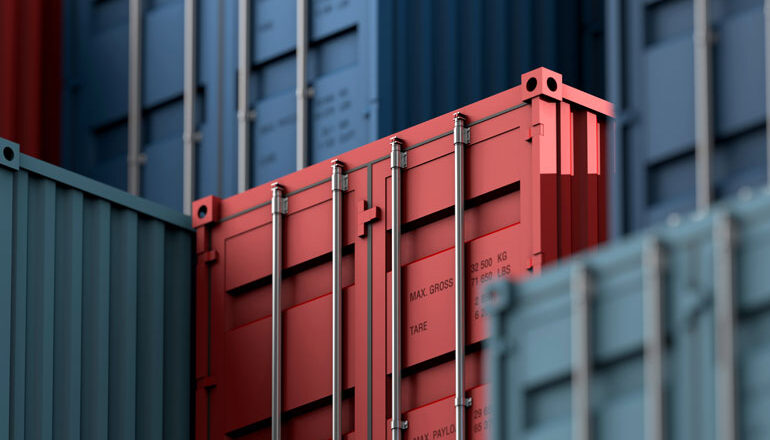The logistics landscape within the life sciences sector has evolved dramatically over the past decade. The complexities involved in handling critical and highly sensitive products such as pharmaceuticals, biologics, and medical devices demand a more sophisticated, efficient, and regulatory-compliant approach. In 2021, the sector faced an unprecedented challenge due to the COVID-19 pandemic, which accelerated the need for rapid, flexible, and resilient supply chains.
This article explores the key logistics trends in the life sciences industry in 2021, providing insights into how companies adapted to meet evolving demands and expectations.
1. Temperature-Controlled Logistics: Cold Chain Transformation
Cold chain logistics remained one of the most critical aspects of life sciences supply chains in 2021. With the surge in demand for vaccines, biologic drugs, and temperature-sensitive therapeutics, the ability to store and transport products under strict temperature controls became a high priority. This includes:
-
Advanced Temperature-Controlled Packaging: The adoption of smart packaging solutions, such as temperature indicators and real-time monitoring sensors, ensured products remained within the required temperature range.
-
Blockchain for Transparency: Blockchain technology enabled the secure tracking of shipments across the entire cold chain, ensuring that pharmaceuticals and vaccines reached their destination with verifiable data on temperature conditions.
-
Innovation in Refrigeration: New technologies in refrigerated containers, such as active and passive cooling systems, allowed for more efficient long-distance transport, especially with the global roll-out of COVID-19 vaccines, which had specific temperature requirements.
2. Digital Transformation and Automation
The life sciences sector, traditionally known for its reliance on manual processes, embraced digital transformation in 2021. The pandemic accelerated the need for more efficient and automated supply chains, with key areas of focus including:
-
Data-Driven Decision Making: The use of big data analytics to forecast demand, manage inventories, and optimize supply chain routes became essential. Companies used data insights to respond more quickly to shifts in the market, particularly in the context of vaccine distribution.
-
Robotics and Automation: Automated warehouses, drones, and robotic systems have been increasingly implemented for inventory management and distribution. These technologies help reduce human error, increase efficiency, and improve the speed of product delivery, particularly in the face of rapid demand surges.
-
Cloud-Based Supply Chain Management: Cloud-based platforms allowed companies to manage and track the life sciences supply chain in real-time, improving visibility and coordination among stakeholders.
3. E-Commerce and Direct-to-Patient (DTP) Delivery
The rise of e-commerce in life sciences was further propelled by the pandemic. Patients increasingly preferred the direct-to-patient (DTP) model, bypassing traditional distribution channels in favor of home delivery services for their medical needs.
-
Telemedicine and Home Delivery: With the rise of telehealth consultations, patients demanded home deliveries of prescription drugs, medical devices, and over-the-counter medications. Logistics providers began offering specialized services tailored to these needs.
-
Consumerization of Healthcare: The shift toward patient-centric delivery models meant that logistics companies had to adapt their processes to manage not only the storage and handling of products but also the delivery to individual patients’ homes, often on tight timeframes.
4. Supply Chain Resilience and Flexibility
The pandemic exposed vulnerabilities in global supply chains, making resilience a top priority for logistics companies within life sciences. In response, the following strategies emerged:
-
Diversification of Suppliers and Routes: Many life sciences companies moved away from single-source suppliers to ensure they had access to multiple alternatives for raw materials and distribution networks. This helped mitigate disruptions caused by lockdowns or supply chain bottlenecks.
-
On-Demand Manufacturing: The demand for rapid vaccine production highlighted the importance of on-demand manufacturing capabilities. Companies increasingly invested in flexible, scalable production facilities capable of shifting rapidly in response to changing needs.
-
Risk Management Tools: The use of AI-powered risk management tools became prevalent, helping companies predict potential disruptions (such as shipping delays, geopolitical risks, or natural disasters) and develop contingency plans to minimize their impact.
5. Last-Mile Delivery Innovations
One of the most crucial aspects of life sciences logistics is last-mile delivery, particularly in urban settings where patient accessibility is paramount. In 2021, several innovations in last-mile delivery improved efficiency and service quality:
-
Same-Day and On-Demand Deliveries: With more patients opting for home delivery of prescriptions, same-day and on-demand delivery services became a standard expectation. Companies partnered with local courier networks to provide more agile, flexible services to meet patient needs quickly.
-
Delivery Through Drones: Drone deliveries for medical supplies, particularly COVID-19 tests and vaccines, gained traction in certain regions. Drones offer the potential to reach remote and underserved locations, bypassing traffic congestion and reducing delivery time.
-
Temperature-Controlled Drones: Companies began exploring temperature-controlled drone solutions, ensuring that sensitive products like biologics and vaccines are delivered safely, even in hard-to-reach locations.
6. Sustainability and Green Logistics
As environmental concerns continued to rise, the life sciences sector made strides in adopting more sustainable logistics practices:
-
Green Packaging: More companies adopted eco-friendly packaging materials, including biodegradable and recyclable options, to reduce waste and minimize the environmental impact of product transportation.
-
Carbon Neutrality in Transportation: In 2021, many logistics companies within the life sciences sector committed to reducing their carbon footprint by using electric vehicles (EVs) for local deliveries and exploring alternative fuels for long-distance transportation.
-
Sustainable Warehousing: There was an increased focus on the sustainability of warehouses and storage facilities, with many companies implementing energy-efficient systems, including solar panels and green building certifications, to reduce the environmental impact of their operations.
7. Regulatory Compliance and Global Standards
The life sciences logistics sector is heavily regulated, with strict compliance requirements to ensure patient safety, product quality, and the integrity of the supply chain. In 2021, the following trends emerged:
-
Strengthened Compliance Measures: With the rise of global trade and vaccine distribution, life sciences companies focused on improving compliance with international regulations, such as Good Distribution Practices (GDP) and Good Manufacturing Practices (GMP).
-
Cross-Border Logistics and Customs Compliance: Logistics providers focused on improving customs clearance processes to ensure smooth cross-border operations, particularly in the context of global vaccine distribution. Automation tools and data sharing between customs authorities helped to expedite the clearance process.
-
Track and Trace Technologies: To ensure product authenticity and quality, life sciences logistics adopted track-and-trace systems that allowed companies to monitor and verify every step of the journey, from manufacturing to delivery.
In 2021, the logistics sector within the life sciences industry demonstrated remarkable resilience, innovation, and adaptability. The trends that emerged, from cold chain transformation to digitalization and sustainability, will continue to shape the future of life sciences logistics in the years to come.
As the sector faces ongoing challenges—ranging from the post-pandemic world to sustainability goals and evolving regulations—continued investment in technology, flexibility, and operational efficiency will be key to navigating the ever-changing landscape of global healthcare supply chains.


